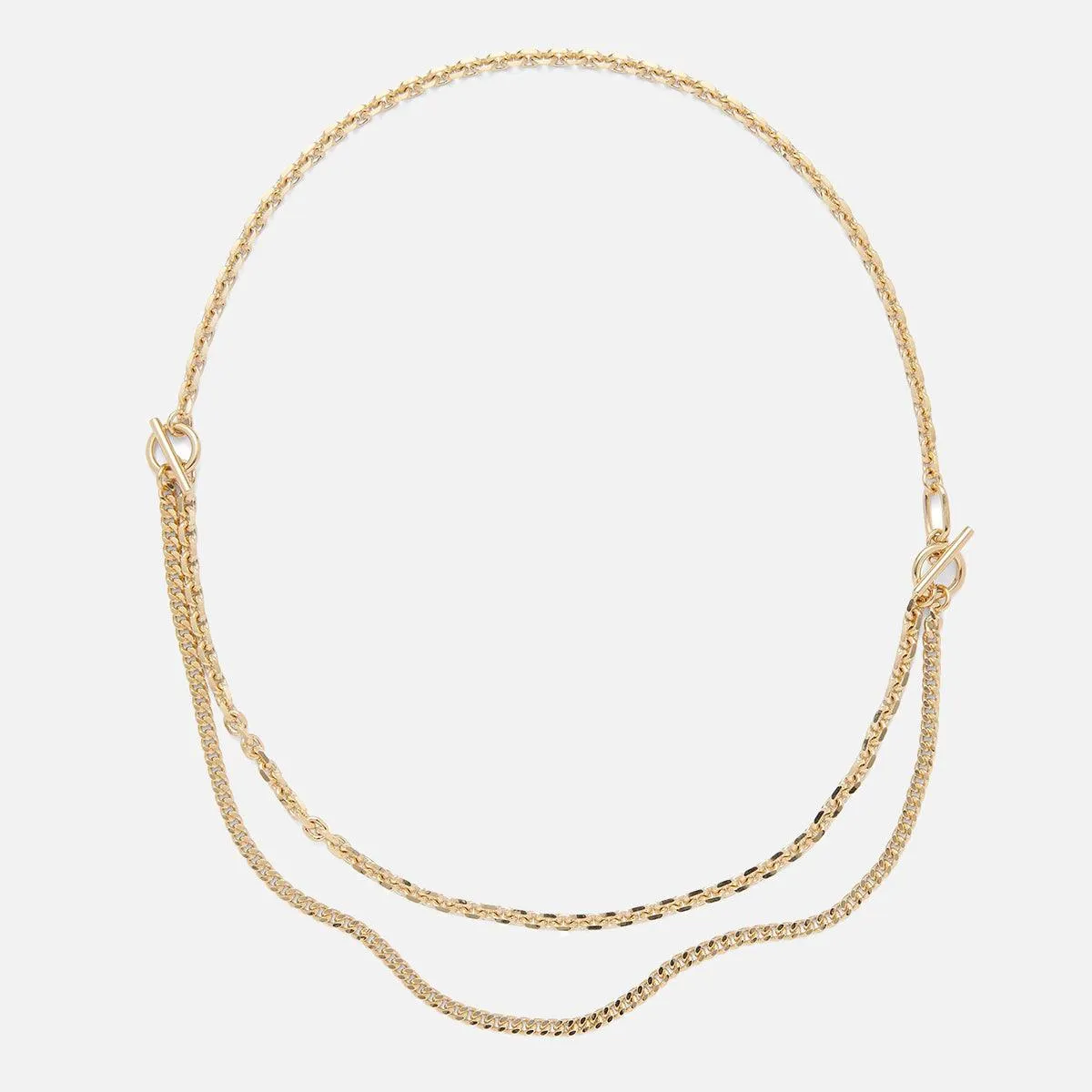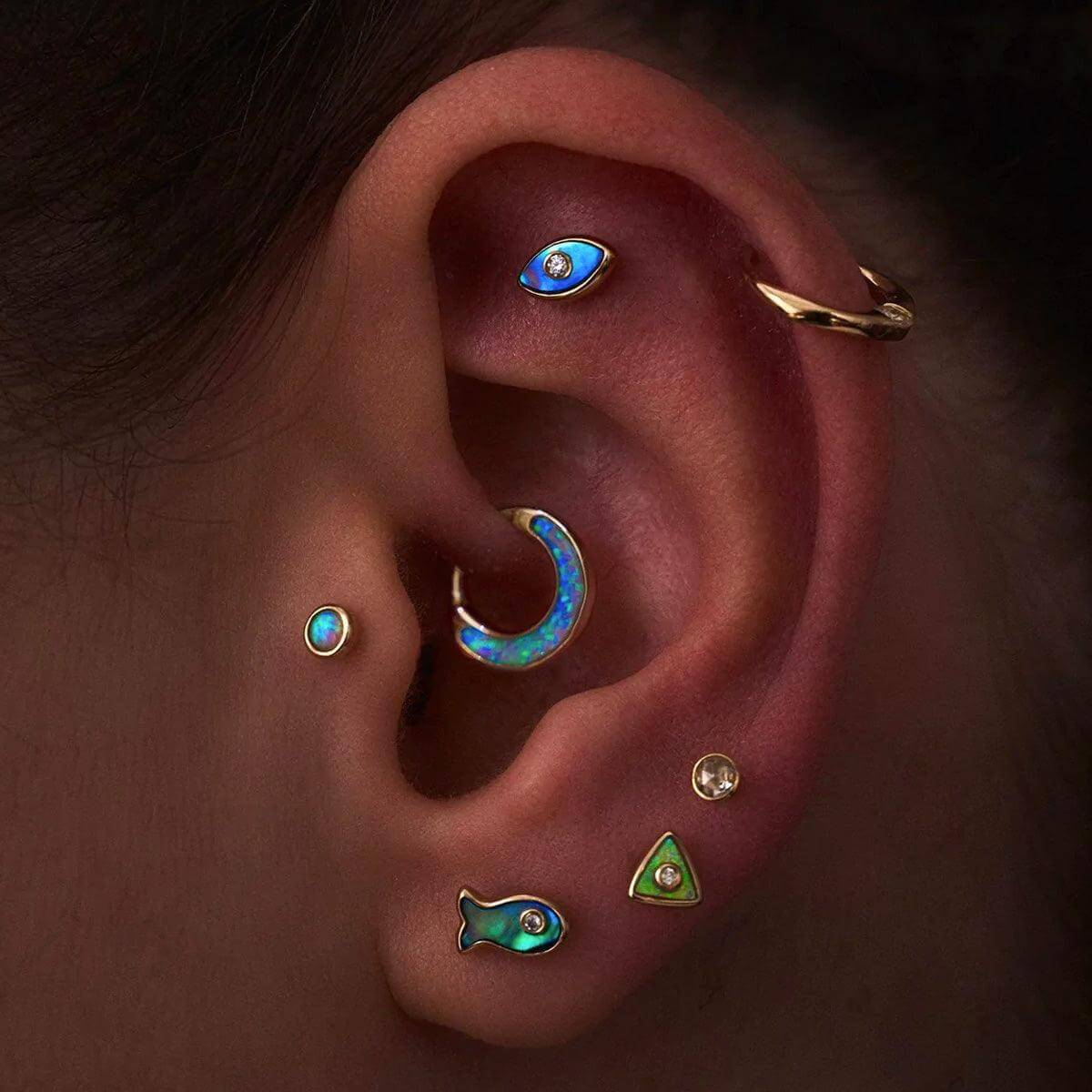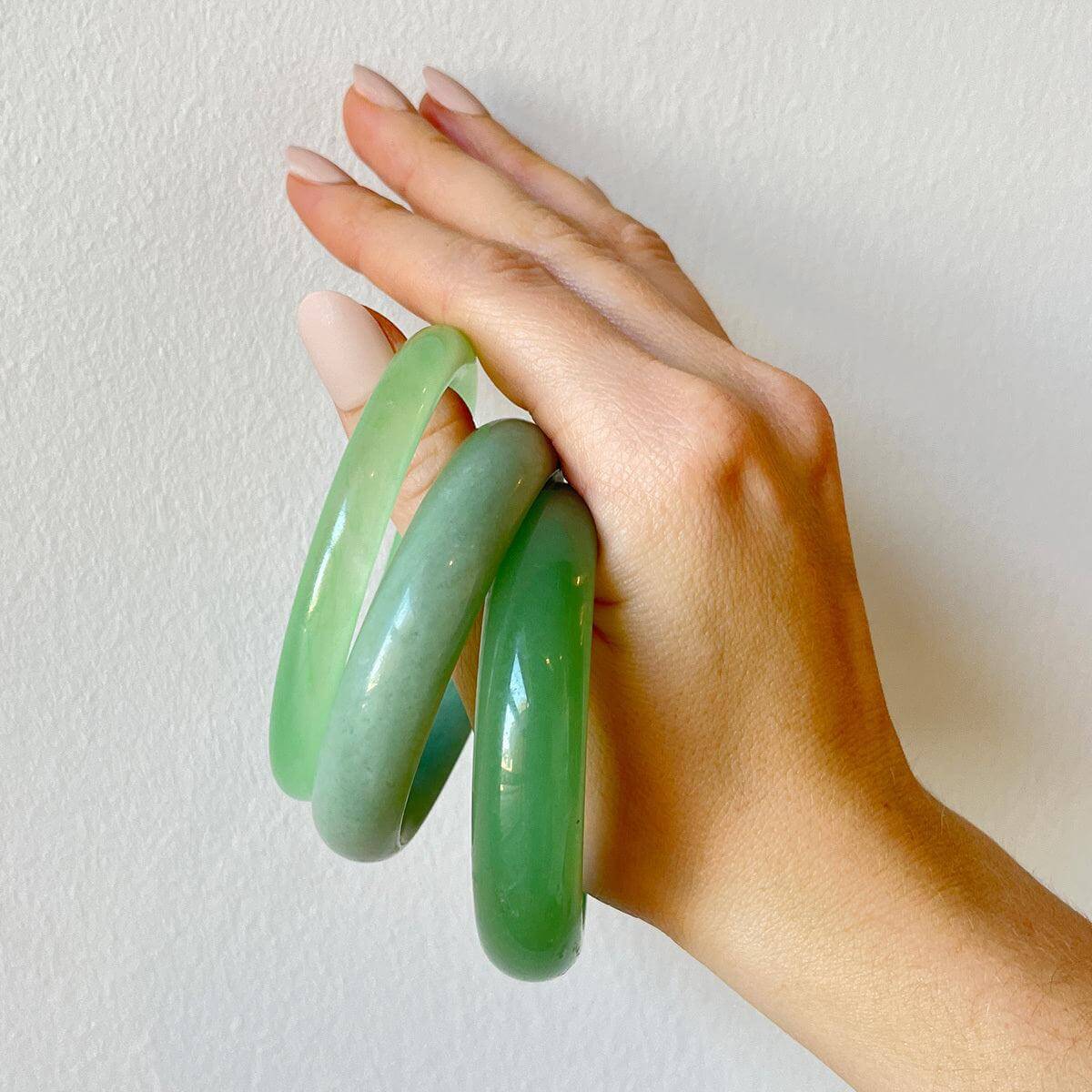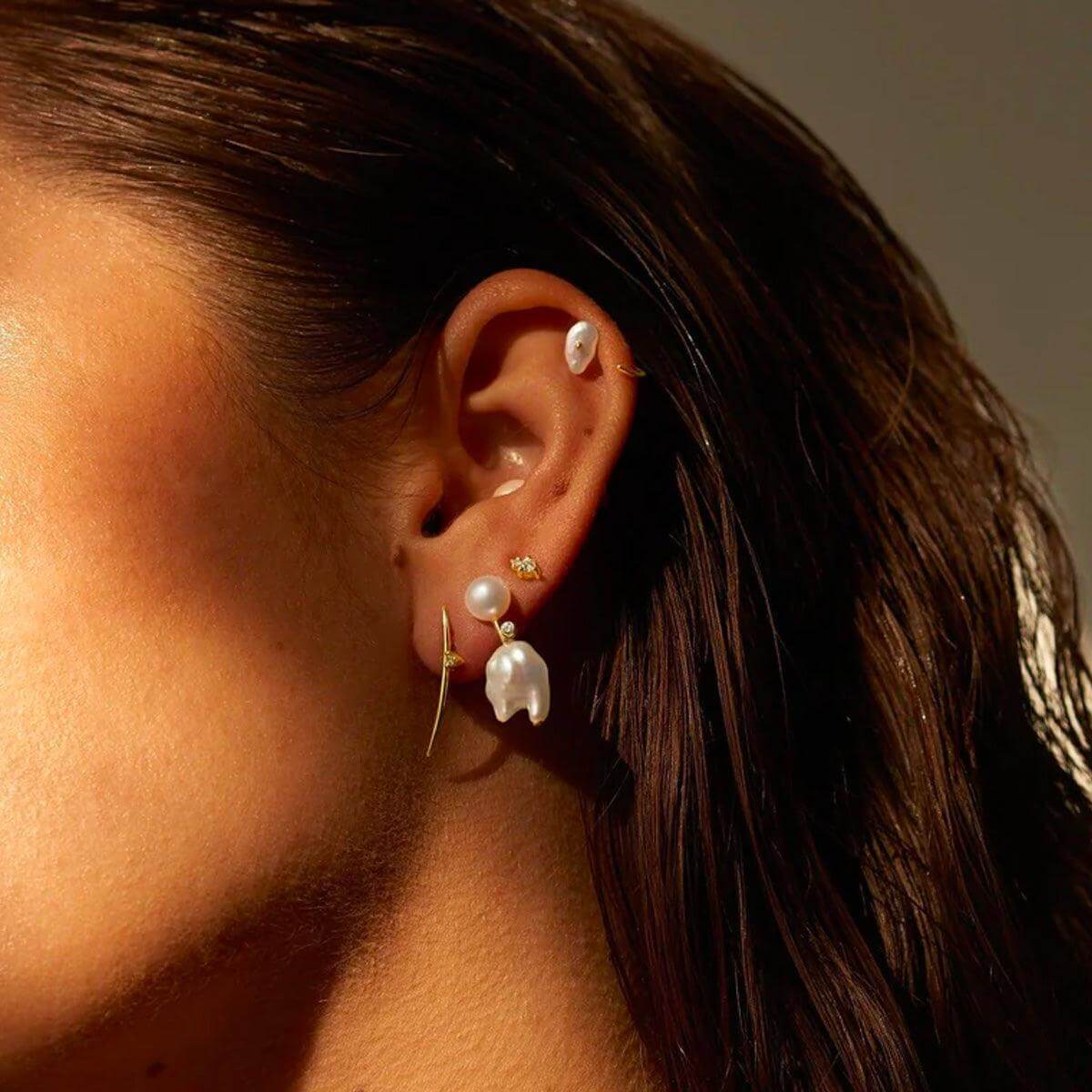You’ve probably seen daith piercings all over Instagram—they’re the ones that look like a hoop through the innermost cartilage fold of the ear. They’re also one of the most popular piercings among celebrities, from Kylie Jenner to Bella Thorne.
With their unique placement and stylish look, it’s no wonder that daith piercings are trending. Many people choose to get a daith piercing because of its looks, but there are also some who believe that this type of piercing can provide health benefits.
So, what exactly is a daith piercing? In this article, we’ll give you a complete guide to daith piercings, from what they are to how to care for them.
Key Facts:
Placement: Through the innermost cartilage fold of the ear.
Jewelry: Usually pierced with a hoop or ring.
Healing Time: Can take up to 6-9 months to heal completely.
Cost: Typically ranges from $30-$80.
What is a Daith Piercing?
You can think of the daith piercing as the anti-tragus piercing’s more stylish cousin. Like the tragus, the daith is located on the inner part of the ear, but it’s placed through the innermost cartilage fold instead of the protruding flap of cartilage that’s right next to the ear canal.
Between the tragus and the daith is a small piece of cartilage called the crus of the helix. The daith piercing goes through this innermost cartilage fold, which is why it’s sometimes called the “crus of the helix piercing.”
Daith piercings are usually pierced with a hoop or a ring, although some people opt for a barbell. The jewelry choice is mostly a matter of personal preference, although some people find that hoops are more comfortable to wear.
What Type of Jewelry Is Best For A Daith Piercing?
Much like other piercings, there are many different types of jewelry that can be used for a Daith piercing. The most common types of Daith earrings are hoops and curved barbells. There are variations to these main styles.
Hoops are the most popular because they’re simple and easy to remove. Curved Beads are another variation of the hoop style, with the addition of a small bead.
A barbell Daith piercing is a slightly curved bar with beads or other styles on either end. These are a little larger than hoops. For beginners, clicker hoop piercings are recommended because they’re easier to remove.
What Type of Jewelry Material Is Best For A Daith Piercing?
There are a wide variety of materials that can be used for Daith piercings. The best material for a Daith piercing depends on your skin and allergies.
Generally, stainless steel is the most popular choice for Daith jewelry because it doesn’t irritate the skin and it’s budget-friendly. Other hypoallergenic metals are good options, such as titanium and 14K gold.
You can also use silver in your Daith piercing. However, many people have allergic reactions to silver, so only use silver if you’re sure you are not allergic to it.
Most piercings are stainless steel, specifically surgical stainless steel. I recommend starting with a budget material before replacing it with something more expensive.
Daith Piercings for Migraines
There is some anecdotal evidence to suggest that daith piercings can provide relief from migraines and headaches. The theory is that the piercing stimulates a pressure point in the ear that’s connected to the trigeminal nerve, which is responsible for transmitting pain signals from the face to the brain.
There’s no scientific evidence to support this claim, but some people report that their migraines have decreased in frequency or intensity after getting a daith piercing. If you’re considering a daith piercing for migraine relief, it’s important to talk to your doctor first to see if this is a good option for you.
Cost Of A Daith Piercing
Well, that depends on a few factors, including the jewelry you choose and the shop you go to. In general, daith piercings cost between $30 and $80, although some shops may charge more or less than this.
The jewelry you choose will also affect the price. If you opt for a simple hoop or ring, it will be on the lower end of the price range. But if you want a more elaborate piece of jewelry, such as a diamond-encrusted hoop or a custom-made ring, you can expect to pay more.
Daith Piercing Aftercare
Most daith piercings take 6-9 months to heal completely, although some people find that their piercings heal more quickly while others take a bit longer.
Taking good care of your piercing during the healing process is essential to help prevent infection and promote healing. Keep the area clean by washing it with mild soap and warm water 2-3 times daily. Avoid touching your piercing with dirty hands, and don’t remove the jewelry until your piercing is fully healed.
See a doctor or piercing professional immediately if you notice any signs of infection, such as redness, swelling, or discharge.
How To Change Out A Daith Piercing
A Daith piercing passes through the inner cartilage of the ear. Make sure its completely healed before you change it. It’s best to wait at least 6 months for the healing process to complete. If the spot is still tender, wait another month. Daith piercings are more sensitive than other piercings.
The exact steps will vary depending on the type of Daith piercing jewelry but the basic process remains the same. Clicker Daith piercings are the easiest to change out.
Clicker Daith jewelry has rings that close and open with a spring mechanism. To change out a clicker Daith Piercing pinch to open them. Slowly rotate the earring and pull the other side through with a smooth motion. To close the ring, pinch both ends together and it should click in place.
If you can’t rotate the Daith piercing, it may be stuck. In that case, it’s best to have a professional remove it.
What are the risks of Getting a Daith Piercing?
As with any piercing, some risks are associated with getting a daith piercing. The most common complication is infection, which can usually be treated with antibiotics. Other risks include:
Allergic reactions: Some people may experience an allergic reaction to the jewelry, which can cause symptoms like redness, swelling, and itching.
Scarring: While most people heal without any problems, some may experience scarring from their piercing.
Migration and rejection: In some cases, the piercing may migrate out of the cartilage or be rejected by the body altogether. This complication is likely to occur if the piercing is not done correctly or is not taken care of properly during the healing process.
If you have any concerns about getting a daith piercing, be sure to talk to your doctor or a professional piercer before going ahead with the procedure.













